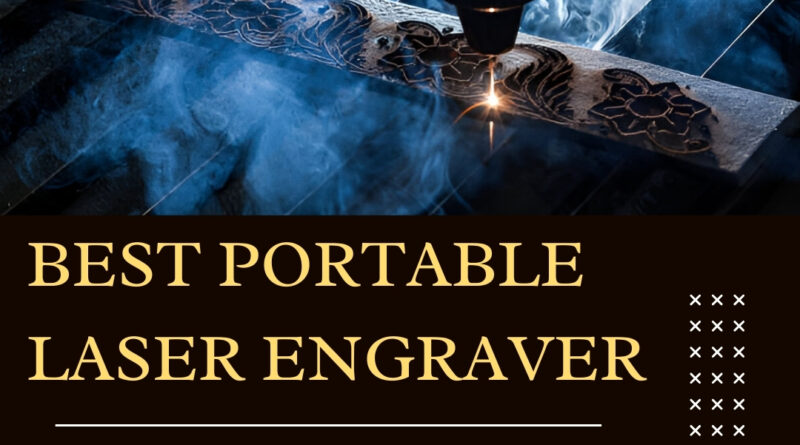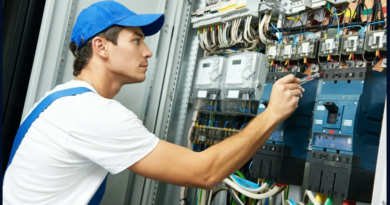Unlocking the Power of the Industrial Engraver: Precision, Efficiency, and Versatility in Modern Manufacturing
The industrial engraver has become a vital tool in the world of modern manufacturing, offering unparalleled precision, efficiency, and versatility. Whether it’s for engraving logos, serial numbers, barcodes, or intricate designs on various materials, industrial engravers have changed the way industries approach marking and engraving tasks. With advancements in laser technology, these machines have become indispensable across a range of sectors, from automotive to aerospace and beyond. This article explores the features, benefits, applications, and future potential of industrial engravers.
Key Features of Industrial Engravers
Industrial engravers, especially laser engravers, use focused beams of light to etch or mark materials with extreme precision. One of the primary features of industrial engravers is their ability to handle a wide range of materials, including metals, plastics, wood, ceramics, and glass. Unlike traditional engraving methods, laser engravers do not require physical contact with the surface, ensuring a non-invasive process that reduces wear and tear on the machine.
The technology behind these machines often includes CO2 lasers or fiber lasers, each offering specific advantages depending on the materials being worked with. Fiber lasers are particularly well-suited for marking metals, while CO2 lasers excel at engraving organic materials like wood, leather, and glass.
Another key feature is the automation and high-speed processing capabilities of industrial engravers. These machines can process large volumes of items quickly and efficiently, significantly reducing production time and enhancing productivity.
Benefits of Using Industrial Engravers
1. Precision and Detail: One of the most significant advantages of using an industrial engraver is the level of precision it offers. The laser can be finely tuned to create intricate designs, logos, and text with extraordinary clarity. This allows businesses to engrave complex patterns, serial numbers, and custom logos without sacrificing quality.
2. Versatility: Industrial engravers can be used across a broad spectrum of materials, from soft plastics to hard metals. Whether you need to mark a delicate wooden product or engrave durable metal parts, industrial engravers can deliver exceptional results on virtually any surface. Their ability to handle a variety of materials makes them indispensable in industries that require diverse marking capabilities.
3. Durability of Marks: The marks created by industrial engravers are highly durable and resistant to fading, even under extreme conditions. Unlike traditional methods that rely on ink or paint, laser engraving results in permanent markings that will not rub off, ensuring that they last throughout the lifecycle of the product.
4. Minimal Maintenance: Industrial engravers, especially laser engravers, require minimal maintenance compared to traditional engraving machines. Since they don’t use physical tools or consumable materials like ink, the wear and tear on the machinery are significantly reduced. This leads to lower maintenance costs and longer operational lifespans.
5. Eco-friendly: Laser engraving is a non-contact, non-consumable method, meaning it doesn’t require harmful chemicals, inks, or solvents. This makes it an environmentally friendly option for businesses looking to reduce their carbon footprint and minimize waste.
Applications of Industrial Engravers
The versatility of industrial engravers has made them a crucial part of various industries. Below are some of the most common applications:
- Automotive Industry: Industrial engravers are used to mark parts with vital information such as part numbers, VIN numbers, and logos. The precision of laser engraving ensures that markings remain legible and durable throughout the lifespan of automotive components, even under harsh conditions.
- Aerospace: Aerospace components require precise and permanent identification due to safety regulations. Industrial engravers are used to engrave part numbers, serial numbers, and other identification information on metals and alloys that are used in aircraft manufacturing.
- Electronics: Laser engravers are frequently used to mark electronic components such as circuit boards, housings, and connectors. This helps with traceability and product identification while ensuring the longevity of the markings.
- Medical Devices: Precision and cleanliness are crucial in the medical industry. Industrial engravers are used to mark surgical instruments, implants, and other medical devices with serial numbers and certifications, ensuring they meet regulatory standards.
- Jewelry and Decorative Items: The jewelry industry benefits greatly from industrial engravers. They can be used to engrave custom designs, names, or messages onto rings, necklaces, and other jewelry pieces with unmatched precision. Additionally, engravers are used for creating intricate designs on decorative items made of metal, wood, or glass.
- Consumer Goods: Whether it’s engraving logos on watches, gadgets, or home décor, industrial engravers help manufacturers ensure brand visibility. The ability to create permanent, high-quality markings ensures that products remain identifiable and promote brand recognition.
Future of Industrial Engravers
The future of industrial engravers looks promising, with continuous advancements in laser technology. As fiber lasers become more powerful and versatile, the range of materials that can be engraved will expand further. This could potentially open up new industries and applications for industrial engravers, particularly in sectors that deal with complex or challenging materials.
Another significant development is the integration of AI and automation into engraving processes. Automation could further reduce the need for human intervention, making engraving faster, more precise, and cost-effective. Additionally, AI could be used to optimize engraving patterns and improve the efficiency of the entire process, allowing for highly customized and intricate designs.
3D engraving is another trend that is expected to gain traction in the coming years. This would allow industrial engravers to create three-dimensional designs and textures, adding a new layer of complexity and artistry to the engraving process.
Conclusion
The industrial engraver is a powerful tool that has become indispensable across various industries. With its precision, speed, and ability to work with a wide range of materials, it has revolutionized the marking and engraving processes. As technology continues to advance, we can expect even greater capabilities from these machines, making them an essential part of the modern manufacturing landscape.




